I've stumbled upon a LED's datasheet that includes a strange recommendation. They want me to drive the LED at >5mA for reasons of "long term performance." I've never seen a similar thing anywhere else, what's the rationale behind it?
-
1+1, I asked a similar question some time ago but nothing related to long term performance was mentioned in the datasheet, most speculation revolved around the consistency of brightness and color: https://electronics.stackexchange.com/questions/343269/led-restricted-minimum-current-do-not-use-below-10ma – Wesley Lee Jan 12 '20 at 18:39
-
@WesleyLee interesting question; I'd assume that the answer given there would only apply to a white LED, though. – Marcus Müller Jan 12 '20 at 18:48
-
3It's a GaP green type. I remember reading papers on this going back into the 1990's. You should probably check Google Scholar, I think. Must be dozens of papers on it. (Not all saying exactly the same thing, by the way.) At low currents, the tunnel and injection currents move into an area where they are of the same magnitude and this affects the charged acceptor distributions in the space charge region. I recall a paper somewhere discussing defect creation by hot electrons entering into the compensated layer, with defect *migration* then forming shunt paths. But this is old GaP news, I think. – jonk Jan 12 '20 at 19:07
-
If you look at figure 3 in the datasheet, the luminous intensity is pretty constant between 5mA and 20mA. Below 5mA, there is a slight knee so there is reduced performance regarding light output. Could this be it? Hard to say how the actual performance is regarding power consumption though. Edit: I think Jonk has a better reason; it crossed my mind that maybe LED degrades at low currents, but I had never heard of this. – Justme Jan 12 '20 at 19:09
-
@MarcusMüller -- I would think that for non-white LEDs the spectrum would change slightly with current too no? Either way I didn't vote as duplicate or anything, its just adding to the question that I have also seen this info and still Im not sure about the answer. :) – Wesley Lee Jan 12 '20 at 19:15
-
2@WesleyLee Oh, yes. Absolutely. The spectrum most certainly shifts at lower currents. That's been documented many times and I've used a spectrophotometer myself to observe it, too. No question, there. I could write my own paper on it, if it hadn't already been written hundreds of times beforehand. – jonk Jan 12 '20 at 19:18
-
I've also asked [the same question](https://electronics.stackexchange.com/questions/295182/why-would-a-led-datasheet-specify-a-minimum-operating-current), so now we have three duplicates (I was first though!) – pipe Jan 13 '20 at 12:06
1 Answers
The properties of aging on transparent substrate LEDs have been documented in research by many but are not handy to me the time of this writing. I have known this for about 10 yrs so Google or Microsoft Scholar ought to have some papers on this. I got mine from EOS by NDA.
Generally 10% of rated max current is needed to prevent some corrosion of the crystal electrode interface. But then with 50kh given as expected min MTBF this has been greatly improved by many brand name suppliers by quality controls to millions of hours if you want to use PWM dimming to 1% some of the time, that would be OK if 100% of the time was also experienced.
Heat generally has a positive aging effect initially only either by soldering or operating at rate temp for several hours or days. This can burn off leakage R and sometimes crystalline-metallic shorts. (dendrites)
- 1
- 3
- 54
- 182
-
Not sure if I understand "if you want to use PWM dimming to 1% some of the time, that would be OK if 100% of the time was also experienced." Do you mean "that would be OK if 100% on was also experienced part of the time." ?? – MicroservicesOnDDD Jun 12 '20 at 21:24
-
1Long ago, I was saying that there was a minimum current for longevity needed on LEDs to prevent a kind of corrosion that may be reversed with the occasional full power when using less than the recommended current . my references are long gone. @MicroservicesOnDDD – Tony Stewart EE75 Jun 13 '20 at 07:38
